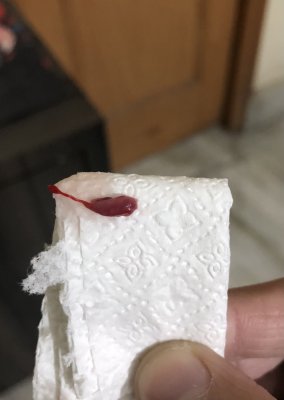My 3 year old female persian, has clumps of blood mixed with a milky white substance in her urine.
Feline veterinary care in my country is quite unprofessional and isn’t helpful.
We’ve been keeping the ph in check at 6.5 and giving L-methionine and D-mannose in case of stones.
Doxycycline 2mg/lb for a week seems to fix the issue for about a month but it’s recurring. This is the third time it’s happened in the past year.
She urinates normally with a normal ph at first but then continues to visit the litterbox every minute trying to urinate again, it’s only then when the blood shows up. She seems to be in pain during the process as well.
We’re constantly trying to get in touch with a professional but it’s not quite promising yet.
Would love some suggestions from someone who’s faced a similar situation or dealt with this before so we know what to do next.
Thanks!
Feline veterinary care in my country is quite unprofessional and isn’t helpful.
We’ve been keeping the ph in check at 6.5 and giving L-methionine and D-mannose in case of stones.
Doxycycline 2mg/lb for a week seems to fix the issue for about a month but it’s recurring. This is the third time it’s happened in the past year.
She urinates normally with a normal ph at first but then continues to visit the litterbox every minute trying to urinate again, it’s only then when the blood shows up. She seems to be in pain during the process as well.
We’re constantly trying to get in touch with a professional but it’s not quite promising yet.
Would love some suggestions from someone who’s faced a similar situation or dealt with this before so we know what to do next.
Thanks!
Attachments
-
1.2 MB Views: 15






